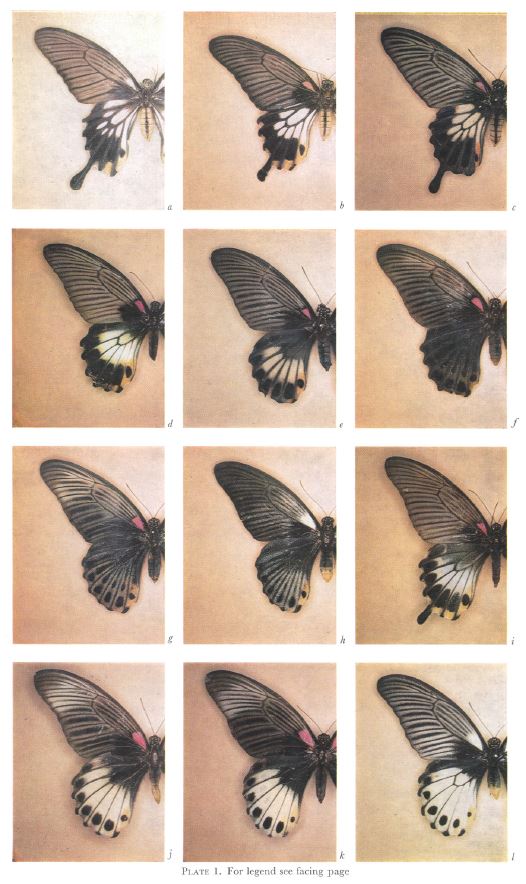To celebrate 350 years of scientific publishing, we are inviting our readers to tell us about their favourite papers from the Royal Society archive.

The resemblance between an edible and fairly inconspicuous species and a dangerous or toxic conspicuous species is known as Batesian mimicry, after the Victorian naturalist H.W. Bates who first described it. The resemblance to the model confers protection from predation on the mimics. The most spectacular example is probably the tropical butterfly Papilio memnon. The evolutionary of mimicry has long attracted the attention of biologists, since it represents an example of an adaptation involving a combination of several different traits. In P. memnon, and some other Papilio species, several different mimetic forms (and sometimes a non-mimetic, ancestral form) can coexist within a population, generating polymorphisms.
Genetic studies have shown that the different forms have a simple mode of inheritance, apparently mostly involving different states (alleles) of the same gene. This led to the proposal that Batesian mimicry contradicts the standard Darwinian view that evolution by natural selection involves a stepwise process of successive changes, each of which is advantageous. Instead, it was proposed that the different mimetic forms each arose as a single mutational event, involving simultaneous changes in several characters (macromutations). The possible evolutionary importance of macromutations was most recently advocated by Stephen Jay Gould in his theory of “punctuated equilibria”.

Plate 1 from Clarke and Sheppard, 1971
In a series of classic papers in the 1950s-1970s, Cyril Clarke and Philip Sheppard at the University of Liverpool set out to discriminate between the Darwinian and macromutationist hypotheses, conducting breeding experiments on a variety of different Papilio species. One of the most stunning examples of their work was on P. memnon, published in Philosophical Transactions B in 1968 and 1971. They showed that the different forms of patterning were indeed inherited as different alleles, despite the fact that they differ with respect to five different traits, including presence or absence of tails on the wings, hindwing pattern, forewing pattern, the colour of the basal triangle on the forewing (epaulette), and abdomen colour.
However, they noted the occurrence of rare forms that combine characteristics of two of the mimics. These are consistent with a model in which five separate but very close locations in the genome exist, each of which control one of the traits. Rare exchange events (crossovers) between two mimicry alleles present in the same individual can produce new combinations of traits, which are poor mimics and are therefore removed rapidly from the population by selection.
However, they noted the occurrence of rare forms that combine characteristics of two of the mimics. These are consistent with a model in which five separate but very close locations in the genome exist, each of which control one of the traits. Rare exchange events (crossovers) between two mimicry alleles present in the same individual can produce new combinations of traits, which are poor mimics and are therefore removed rapidly from the population by selection.
This is consistent with the ‘supergene’ hypothesis for the evolution of mimicry, proposed by Sheppard in 1959. According to this hypothesis, the first step towards mimicry involves a mutation conferring a partial degree of resemblance to the model, due to a change in a single trait. A mutation affecting another trait could improve resemblance to the model when combined with this original mutation, but might well reduce fitness in its absence. This means that only mutations at locations in the genome that are close to the original mutation can spread, since otherwise the unfit combinations of traits can occur. In addition, there will be selection to suppress crossovers in this region of the genome. Eventually, the variants at the relevant sites in the genome will appear to be components of a single genetic unit, without requiring macromutations to explain their pattern of inheritance.
The supergene hypothesis is consistent with the genetic data on P. memnon and other species of Papilio, obtained by Clarke and Sheppard over many years of difficult breeding experiments. This, however, falls short of rigorous proof, which can only be obtained using the powerful methods of molecular genetics to identify exactly what is going on at the level of the DNA sequence of the region of the genome in question. This remains to be done for P. memnon.
Tell us about your favourite paper. Click here to find out how.
